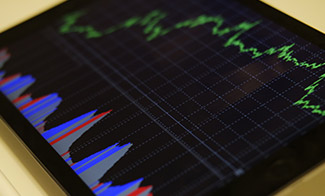Planning Ahead: What Comes After the Economic Boom?
The U.S. economy is enjoying its longest economic expansion in history. While no one knows exactly how long it will last, it certainly won’t last forever.
For business owners, getting ahead of a slowdown means taking steps now to prepare your company for what comes next.
Be Proactive
Economic downturns don’t happen suddenly, so there’s time to get ahead. Here are some ideas to help you get ready for the “next” economy:
Choose profits. It’s tempting to choose sales over profits. But it doesn’t make sense to make deals that don’t help your bottom line. To choose profits, you must be keenly aware of how your company makes money.
You must know the profit margin on every product, every service, and every sale. Only with these numbers can you focus your sales energy on transactions that matter.
Keep a growth mindset. Of course, your company should always be running at its most efficient. But tightening the belt isn’t the only answer. Instead, figure out how you can make more money. Create a taskforce to mine for new customers, new opportunities, and new product offerings. Keep growing!
Look at discretionary costs. Examine your company’s memberships, meals, entertainment, travel, trade show participation, and other costs. Are they in line? If you’re preparing for a downturn, you should be stockpiling cash.
Also, tighten up on your collections—this can make a big difference in cash flow.
Consider your labor force. If your business slows, how would you reduce your workforce? Determine the key players. Which employees are the “must haves” to keep your business humming? Could you slow hiring or expand job descriptions and hours?
Continue to automate. In lean times, efficiency is especially important. To remain at your peak productivity level, continue to invest in technology. Look ahead to see what equipment should be upgraded or replaced and what type of training will be required to make the most of the new investment.
Do a “stress test.” A stress test will give you an idea of how much financial stress your company can handle. This type of risk analysis lets you look at all the variables you can’t control and what would happen if they changed.
For example, what would happen if the cost of your materials increased by a certain percentage? What would be the impact of your top two customers leaving? How much would your company suffer if your top supplier failed?
Watch KPIs. If you aren’t using a dashboard to watch your company’s key performance indicators (KPIs), you are missing out on a clear and effective way to get a quick overview of how you’re doing.
KPIs are different for every company, but they share certain traits: They are actionable, measurable, and timely, and they impact the bottom line. You’ll want to tune into those that are most relevant to you.
All businesses should be tracking revenue growth, net profit margin, current accounts receivable, and cash flow. Depending on your business, other KPIs might include measures such as revenue per employee, inventory turnover, relative market share, sales backlog, and so on.
Stay Focused
Underscoring each of these ideas is awareness. In boom times, it’s easy to overlook subtle changes in your company’s performance and to accommodate marketplace shifts. To prepare for a less robust economy, focus on the basics and good business practices that will see you through whatever comes next.
